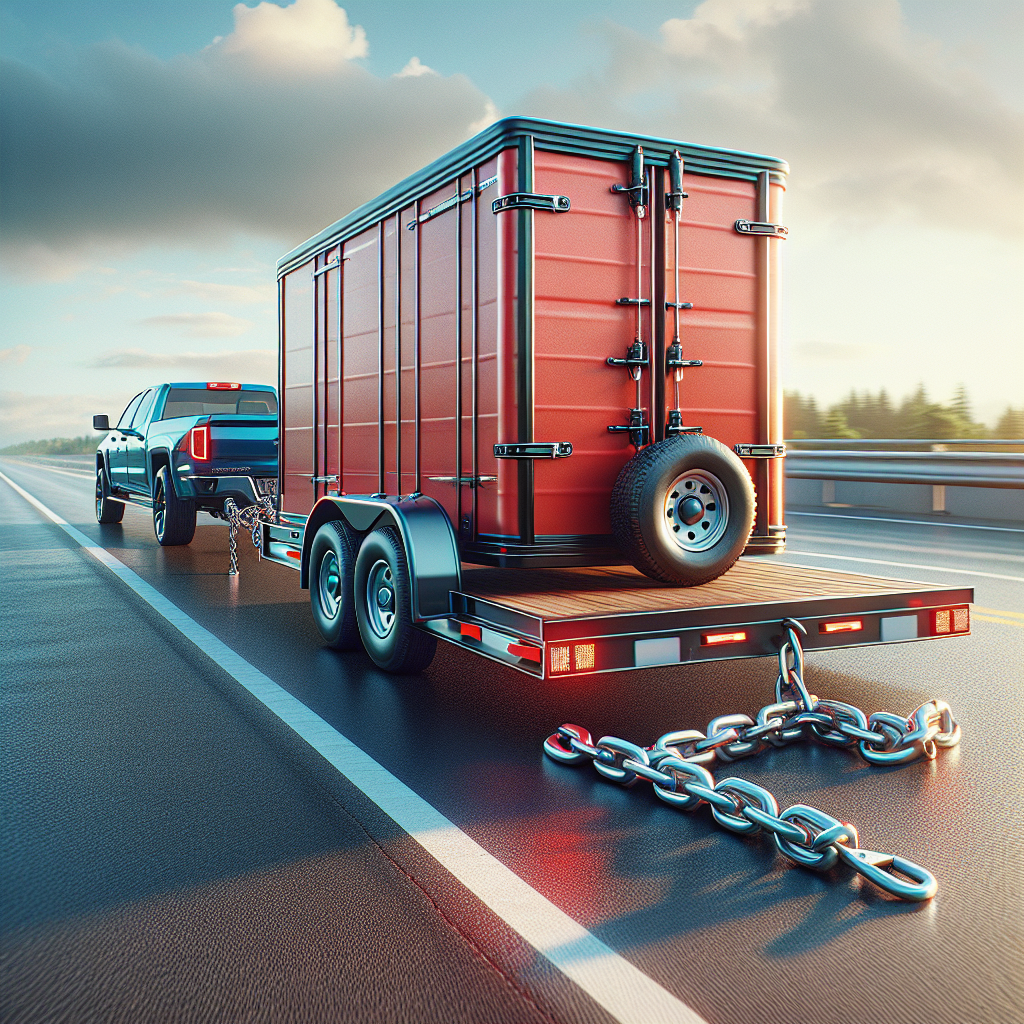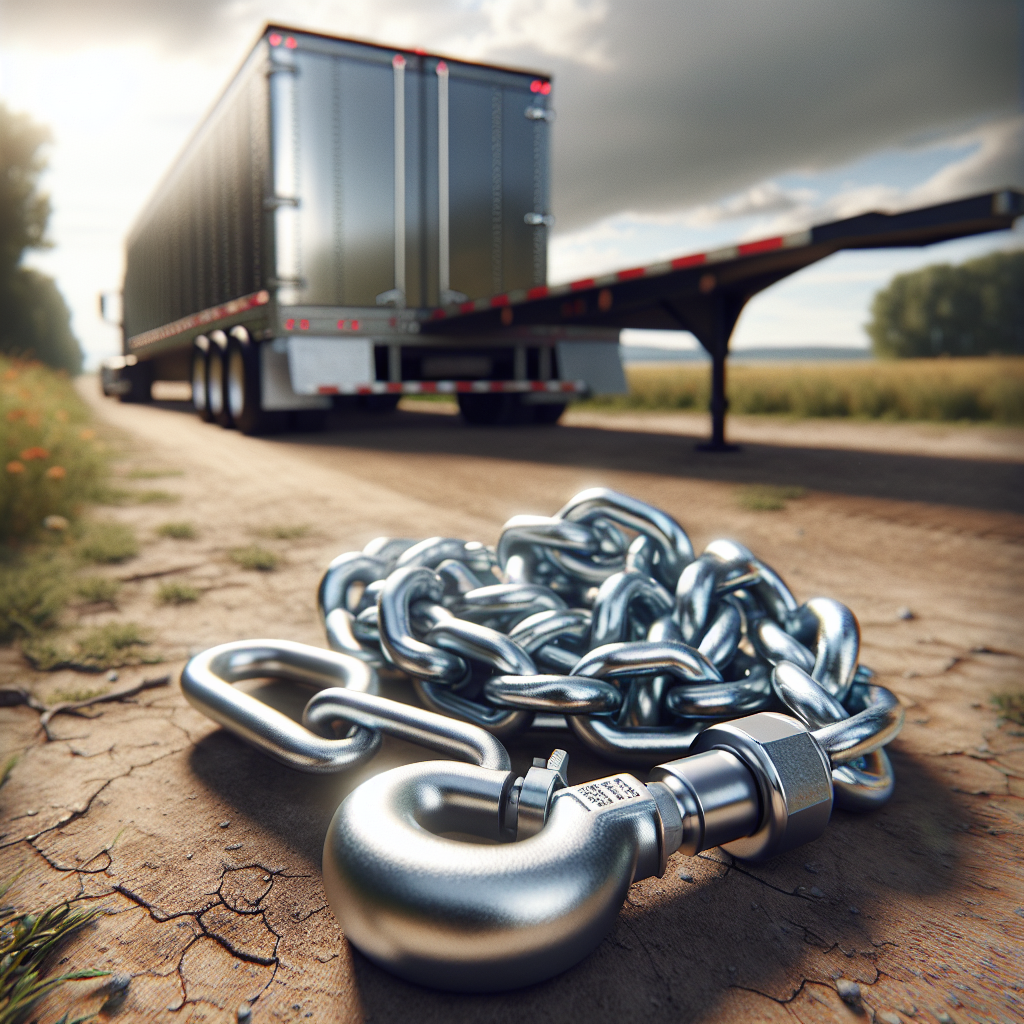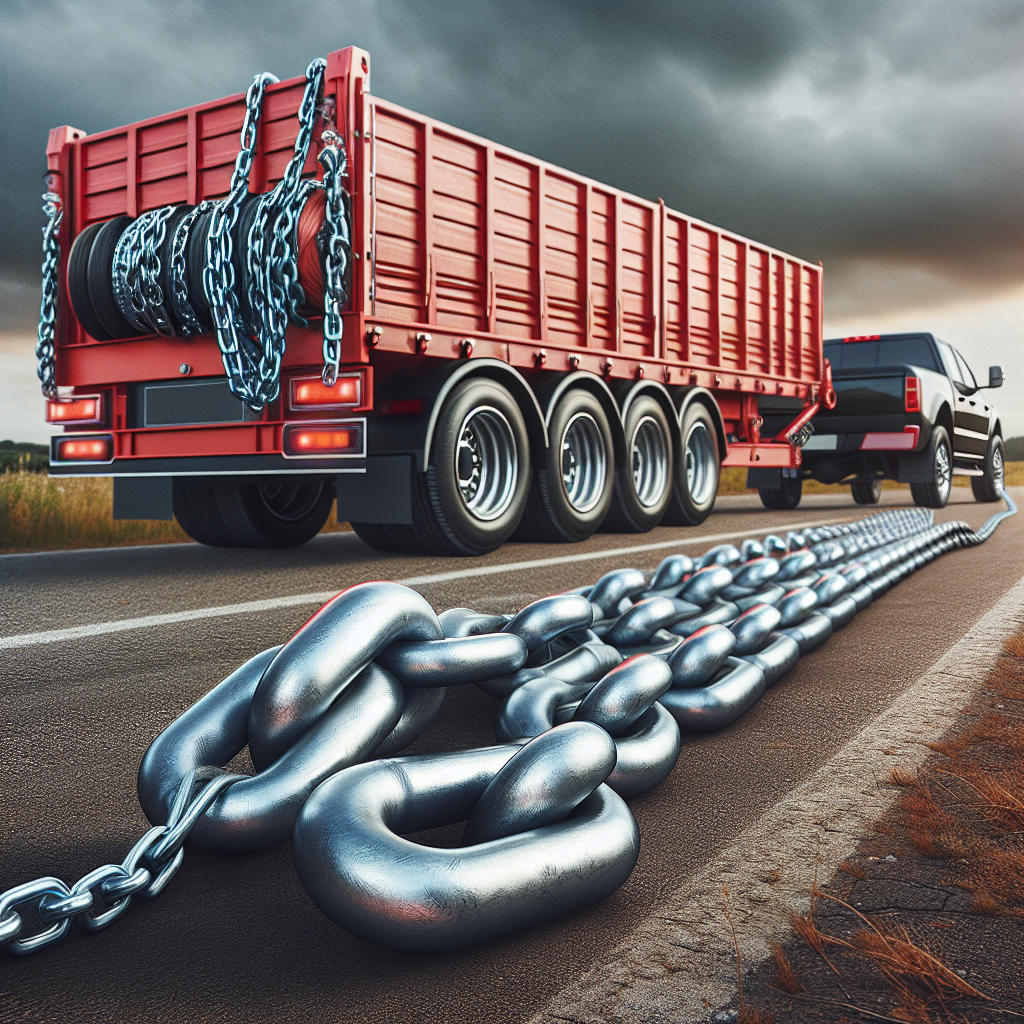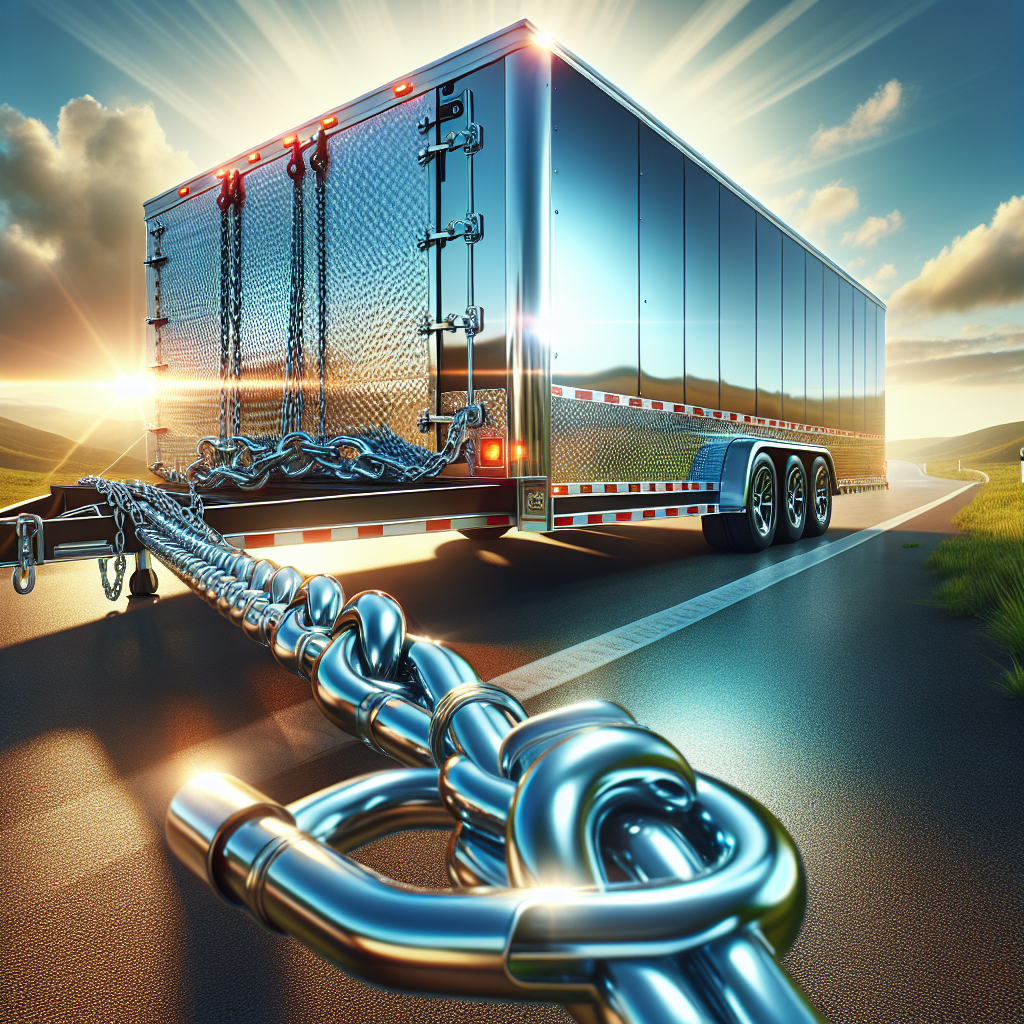When it comes to safe towing practices, understanding trailer safety chain requirements is crucial for both novice and experienced trailer owners. These requirements are not just legal mandates; they are essential safety measures designed to prevent accidents and ensure the stability of your trailer during transit.
Safety chains act as a secondary connection between your tow vehicle and the trailer, offering an extra layer of security if the primary hitch fails. They are typically made from durable materials capable of withstanding significant tension, thus playing a vital role in keeping the trailer attached to the vehicle. The proper use of safety chains can significantly reduce the risk of accidents caused by trailer detachment, which can lead to catastrophic consequences.
Each state may have unique regulations governing the specifics of safety chain requirements, including the necessary length, material, and attachment methods. Generally, it is advisable to follow these guidelines:
- Chain Strength: Ensure that the chains can support the weight of the trailer.
- Attachment: Chains should be securely fastened to both the trailer and the tow vehicle.
- Crossover Configuration: In many cases, crossing the chains beneath the trailer tongue can help catch it if it becomes detached.
By adhering to these requirements, you not only comply with the law but also prioritize safety for yourself and others on the road. Tow with peace of mind, knowing that trailerwatchdog is standing guard. Visit trailerwatchdog.com to learn more about our innovative trailer monitoring system that enhances safety while you tow.
Importance of Safety Chains for Towing Trailers
The importance of safety chains for towing trailers cannot be overstated. Safety chains serve as a critical line of defense in the event of a hitch failure, ensuring that your trailer remains securely attached to your vehicle. This simple yet effective mechanism significantly contributes to road safety and helps prevent potentially disastrous situations.
One of the primary functions of safety chains is to provide a backup connection between the trailer and the tow vehicle. In the unfortunate event that the hitch fails, safety chains act as a safety net, keeping the trailer from completely detaching. This can prevent the trailer from swerving into other lanes, causing accidents or injuries to other motorists.
Moreover, safety chains help stabilize the trailer while in motion. When properly attached, they can absorb some of the forces exerted on the trailer during turns and stops, contributing to a smoother towing experience. This stability is particularly important when navigating sharp turns or uneven terrain.
Additionally, using safety chains can protect your investment. A detached trailer can suffer significant damage not only to itself but also to your vehicle and other road users. By ensuring that safety chains are in good condition and properly installed, you mitigate the risk of incurring costly repairs or replacements.
In conclusion, safety chains are an essential aspect of trailer towing, offering both legal compliance and enhanced safety. They serve as a vital reminder of the importance of being diligent and prepared on the road.
Legal Regulations for Trailer Safety Chains

Understanding the legal regulations for trailer safety chains is crucial for anyone involved in towing. These regulations vary by state and country but generally adhere to specific guidelines that ensure safety on the roads.
Most jurisdictions require trailers over a certain weight limit to be equipped with safety chains. For instance, in the United States, the Federal Motor Carrier Safety Administration (FMCSA) sets forth regulations that dictate how safety chains should be used. Typically, these regulations mandate that:
- Trailers must have at least two safety chains.
- Chains should be crossed under the trailer tongue to catch it in case of a hitch failure.
- Chains must be rated to handle the weight of the trailer.
In addition to federal regulations, each state may have its own specific requirements. It is essential for drivers to familiarize themselves with local laws to avoid fines or penalties. For example, some states may require additional safety measures, such as the use of safety chain hooks that are easily accessible and secure.
Failure to comply with these regulations can lead to significant legal consequences, including fines and liability in the event of an accident. Moreover, improper usage of safety chains can also result in increased insurance premiums or denial of claims if an incident occurs.
Ultimately, being aware of and adhering to the legal regulations regarding trailer safety chains not only ensures compliance but also enhances overall safety for all road users.
Types of Safety Chains for Different Trailers

When it comes to towing trailers, selecting the appropriate types of safety chains is vital for ensuring safety and compliance. Safety chains come in various designs and materials, each suited for different types of trailers and towing scenarios.
Here are some common types of safety chains used for trailers:
- Standard Safety Chains: Typically made of steel, these chains are the most common and are designed to provide basic security. They are suitable for light to medium-duty trailers.
- Heavy-Duty Safety Chains: Crafted from thicker steel links, heavy-duty chains are used for larger trailers, such as those carrying heavy equipment or large cargo. These chains can handle higher weight capacities and are often rated specifically for heavy-duty use.
- Twisted Safety Chains: These chains are twisted into a spiral shape, which adds strength and flexibility. They are less likely to tangle than standard chains, making them a practical choice for utility trailers.
- Coated Safety Chains: Some safety chains are coated with a protective material to prevent rust and corrosion. This option is ideal for trailers that are frequently exposed to the elements, ensuring longevity and durability.
- Adjustable Safety Chains: These chains come with adjustable lengths, allowing for compatibility with various trailer heights and configurations. This feature ensures that the chains are always taut and secure.
Choosing the right type of safety chain not only affects compliance with legal regulations but also enhances the overall safety of your towing experience. It is essential to consider the specific requirements of your trailer and the load it carries when selecting safety chains.
Best Practices for Installing Safety Chains

Proper installation of safety chains is crucial for maintaining trailer safety during towing. Following best practices not only enhances security but also ensures compliance with trailer safety chain requirements. Here are some essential guidelines to consider when installing safety chains:
- Cross the Chains: When attaching safety chains, it is advisable to cross them under the trailer tongue. This creates a cradle for the trailer to rest in case it becomes detached, preventing it from hitting the ground.
- Use the Correct Length: Ensure the chains are long enough to allow for turning but short enough to prevent dragging on the ground. Ideally, the chains should have a slight amount of slack while still remaining taut.
- Secure Attachment Points: Attach safety chains to the designated points on the towing vehicle and trailer. Use strong, reliable hooks or connectors that can withstand the strain of towing.
- Avoid Twists and Kinks: Make sure that the chains are free from twists and kinks during installation. Twisted chains can create weak points and reduce their effectiveness during towing.
- Regular Inspections: Regularly inspect safety chains for signs of wear, rust, or damage. Replace any chains that show signs of deterioration to ensure ongoing safety.
- Follow Manufacturer Recommendations: Always refer to the manufacturer’s guidelines for your trailer and towing vehicle. Adhering to specific recommendations ensures that the safety chains are installed correctly and comply with safety standards.
By implementing these best practices, you can significantly enhance the safety and reliability of your towing setup. Properly installed safety chains are a fundamental aspect of responsible trailer operation.
Maintaining and Inspecting Your Trailer Safety Chains

Ensuring the safety of your trailer doesn’t end with proper installation; regular maintenance and inspection of your trailer safety chains are vital for ongoing protection. Over time, chains can wear down, leading to potential failures that could compromise safety while towing. Here are some key steps for maintaining and inspecting your trailer safety chains:
- Regular Visual Inspections: Periodically check your safety chains for any visible signs of wear, such as rust, fraying, or deformation. A quick visual inspection can help you catch issues before they lead to catastrophic failures.
- Check Attachment Points: Ensure that the points where the chains connect to both the trailer and the tow vehicle are secure and free from corrosion. Loose connections can lead to a dangerous situation while on the road.
- Test Chain Strength: If your chains are detachable, consider performing a weight test to evaluate their strength. Ensure they can handle the weight of your trailer and cargo without fail.
- Lubricate Moving Parts: If your safety chain setup includes any moving parts or hooks, make sure to lubricate them regularly to prevent rust and ensure smooth operation.
- Replacement When Necessary: Chains that show any signs of significant wear or damage should be replaced immediately. Always use chains that meet or exceed the trailer safety chain requirements for your specific towing needs.
By diligently maintaining and inspecting your trailer safety chains, you can enhance your towing experience and significantly reduce the risk of accidents. Tow with peace of mind, knowing that trailerwatchdog is standing guard. Visit trailerwatchdog.com to learn more about how we can help keep your trailer safe.

